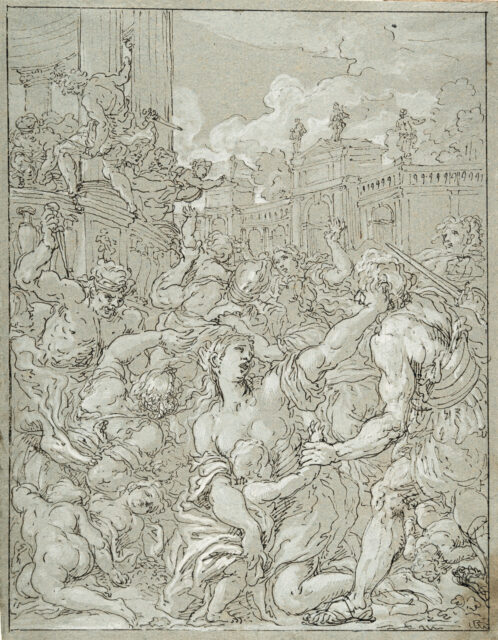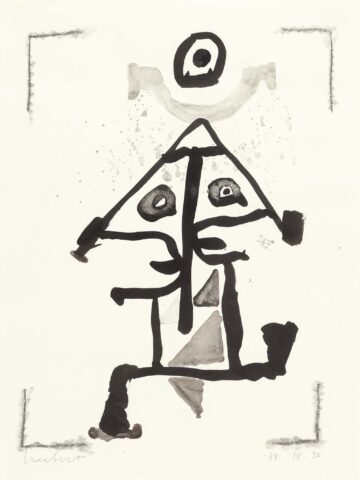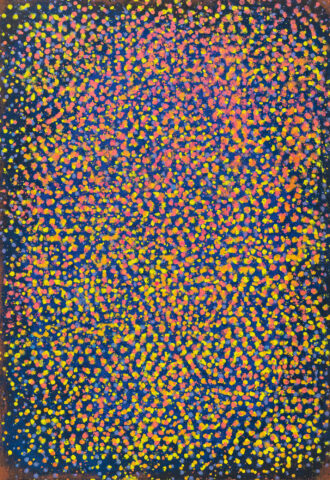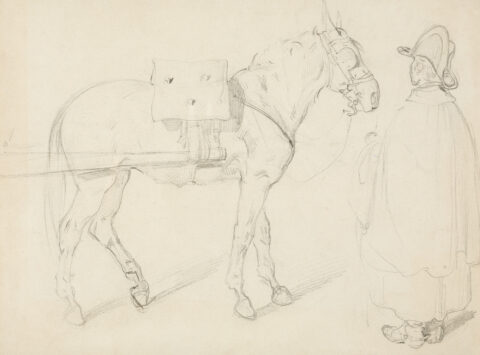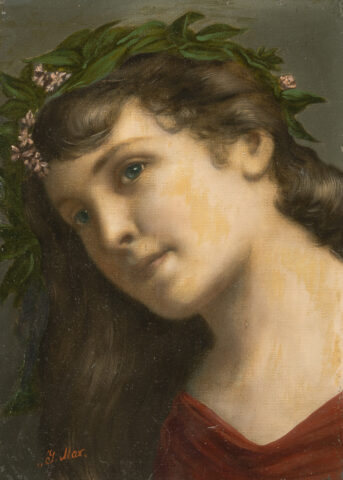
The massacre of the innocents
Details
Literatur:
Nicholas Turner, European master drawings from Portuguese collections II: Italy and Portugal, Porto 2021, S. 144, Kat.-Nr. 59, mit farb. Abb.
Ausstellung:
Desenhos de mestres italianos em colecções portuguesas (II), Museu Nacional Soares Dos Reis, Porto (Oktober–Dezember 2001), Kat.-Nr. 59
Provenienz:
Wohl Jean-François Gigoux (1806-1894), Paris, (vgl. Lugt 1164);
Ingeborg Tremmel (1925-2002), Fürstenfeldbruck;
Ketterer, München, Auktion (Sammlung Tremmel), 5.5.2003, Los 387 (als “Florentinisch”);
Privatsammlung, Belgien;
Artcurial, Paris, Auktion, 27.3.2015, Los 82 (als “Johann Carl Loth”);
Europäische Privatsammlung.
Descrizione
The effective lighting, created by means of numerous white highlights applied to the grey-blue paper with the tip of the brush, and the movements of the bodies, set close to the front plane of the picture and entwined in tumult, captured with powerful strokes, may lead one to think that this pen and ink drawing is a Venetian work of the late 16th century (cf. for example “The Martyrdom of St. Justina”, J. P. Getty Museum, Los Angeles, inv.-no. 87.GA.92, no. 87.GA.92). This highly dramatic depiction of the Bethlehemite infanticide was in fact painted in Venice, but a century later. It is not the work of a native Italian, but an example of the draughtsmanship of the German-born painter Carl Loth, who had made Venice his adopted home. Loth experimented again and again with placing as many naked bodies as possible in a limited pictorial field by means of skilful arrangement, and this is also the case here. Loth was trained by his father, the court painter Johann Ulrich Loth (c. 1590-1662), who in turn was strongly influenced by 16th century Roman painting. He is known to have lived in Italy since about 1655, first in Rome, then in 1656/57 he moved to Venice, which he never left until his death. There he worked under Giovanni Battista Larghetti (1625-1676), a successor of Luca Giordano (1634-1705), whose dramatic tenebrism he incorporated into his own work. He achieved some renown in Venice. Among his collectors was Leopold I, Holy Roman Emperor, who appointed him court painter in 1692. – With a brown stain in the lower right corner. The paper of the left edge slightly cockled. Minor creases. In good condition.
* Tutte le informazioni includono la commissione a carico dell'acquirente (27%) senza IVA e senza garanzia. Salvo errori.
** Tutte le informazioni più la commissione a carico dell'acquirente e l'IVA e senza garanzia. Salvo errori.
*** Con riserva: L'offerta è stata accettata al di sotto del limite. L'acquisizione dell'opera potrebbe essere ancora possibile nella nostra vendita post-asta.
R = Le opere d'arte regolarmente tassate
N = Opere d'arte soggette a tassazione differenziata e provenienti da un paese non UE
Non è consentita la riproduzione e la distribuzione privata o commerciale di tutte le illustrazioni delle opere esposte nell'archivio della mostra e dell'asta. Tutti i diritti riservati.


